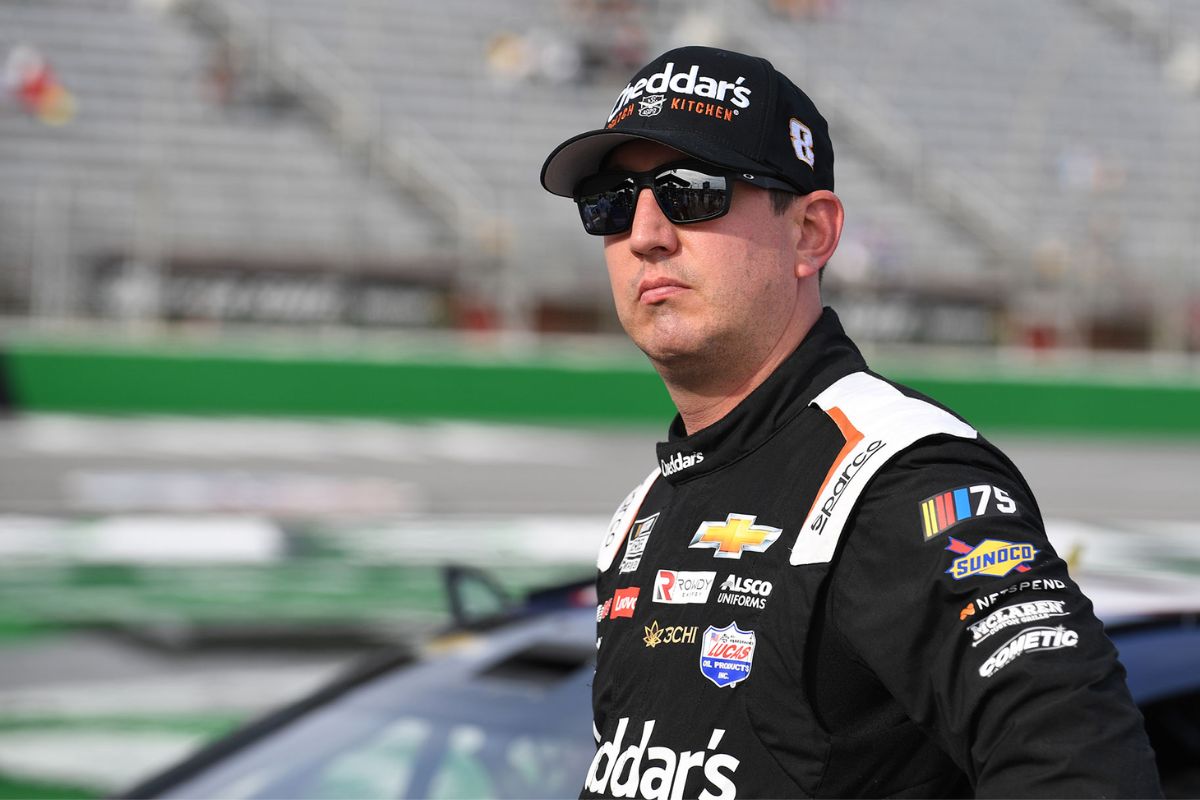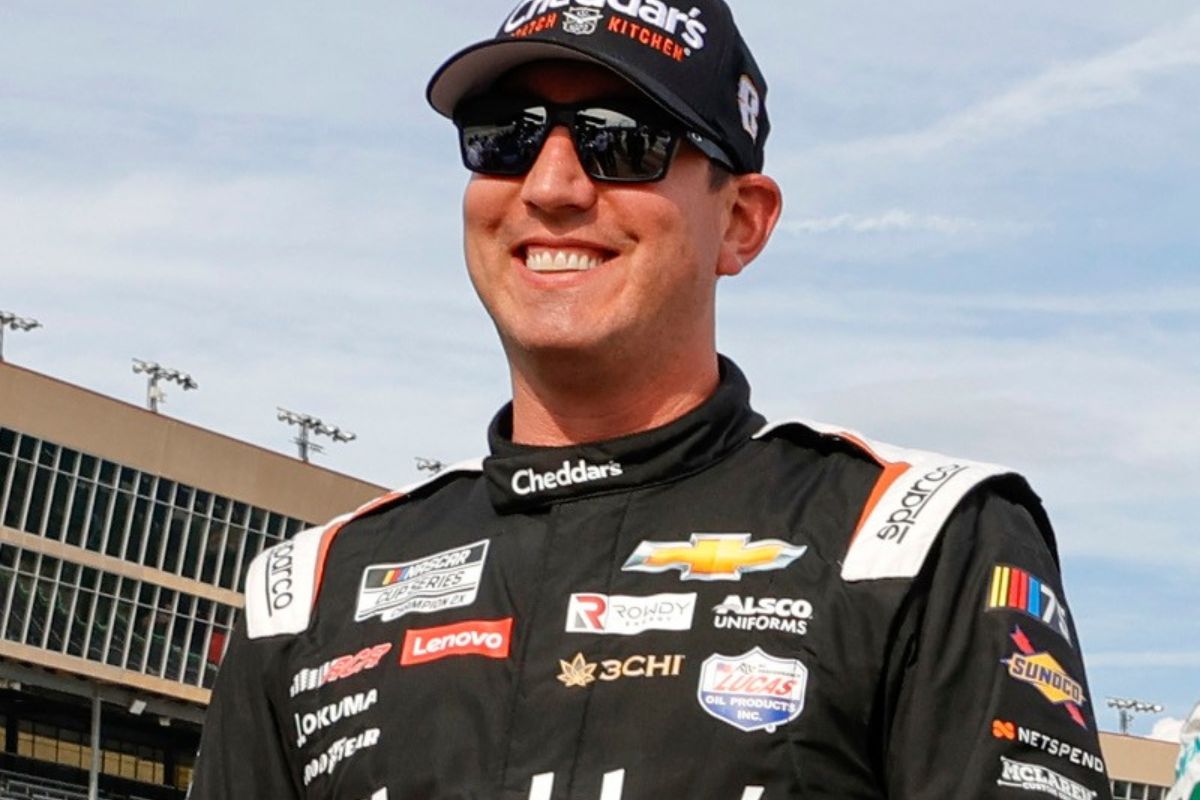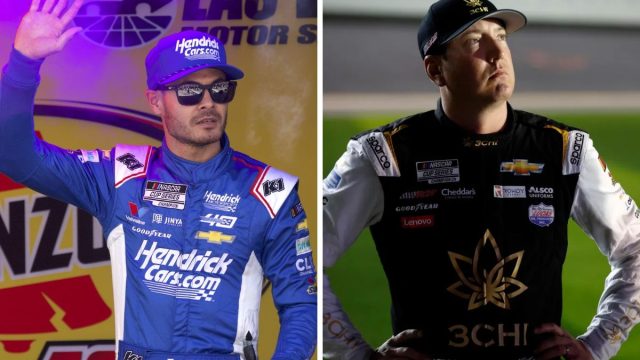Kyle Busch’s Crash Derails Larson’s Pit Strategy: Kyle Busch’s sudden crash into the wall at lap 170 not only triggered a caution but greatly disrupted the racing rhythm, prompting Larson’s team to reassess their pit strategy amidst a fiercely competitive field. This incident highlights the volatile nature of racing, where strategic plans can be overturned in an instant, forcing teams to demonstrate remarkable adaptability and quick decision-making. Larson, having displayed dominance and strategic awareness earlier, now had to navigate through recalibrated strategies against rivals like Truex Jr. and Logano. This scenario emphasizes the essence of motorsports—unpredictability and the crucial role of in-race strategy adjustment. The unfolding events promise further insights into the dynamics of NASCAR racing strategy.
Key Takeaways
- Kyle Busch’s crash at lap 170 prompted a caution, disrupting the ongoing race strategy for Larson’s team.
- The incident forced Larson to recalibrate pit stop timing amidst competition, altering expected race outcomes.
- Larson’s team had to adapt their strategy on the fly, showcasing their resilience and strategic flexibility.
- The crash highlighted the unpredictable nature of racing, emphasizing the importance of swift and strategic decision-making.
- Larson’s performance post-crash demonstrated his ability to regain positions, underlining the critical role of adaptability in motorsports success.
Incident Overview
In the heat of competition during Stage 2 at lap 170, Kyle Busch’s unexpected crash into the wall with his No. 8 car initiated a series of strategic disruptions, greatly impacting Kyle Larson and the HMS #5 team’s meticulously planned pit strategy. The incident unfolded rapidly as Busch’s car became unmanageably loose, careening into the wall and prompting immediate action from race officials who flagged off a caution. This moment was not just a crucial point in the race due to the physical implications for Busch and his vehicle, but also for the strategic ramifications it imposed on the entire field, particularly Larson and his team.
The caution flag, a direct consequence of Busch’s mishap, served as a stark interruption to the flow of the race, compelling teams to quickly reassess their strategies under new, unexpected conditions. For Larson’s team, this meant grappling with the timing of their planned pit stops, which had been carefully orchestrated to split between the stages for best performance and efficiency. The sudden shift required not only a rapid strategic pivot but also a recalibration of the team’s expectations and potential outcomes for the remainder of the race.
Larson’s crew chief, Cliff Daniels, communicated via the radio:
“That scr*ws up, doesn’t it?.”
As the dust settled and the immediate aftermath of the crash was dealt with, the broader implications of the incident began to emerge. Crew chiefs and strategists, including Larson’s own Cliff Daniels, found themselves in a position where adaptability and swift decision-making became paramount. The incident highlighted the unpredictable nature of racing, where a single moment can greatly alter the competitive landscape, challenging teams to navigate the complexities of strategy, timing, and execution under pressure.

Impact on Pit Strategy
The unforeseen crash by Kyle Busch not only disrupted the rhythm of the race but also compelled Kyle Larson’s team to assess and modify their planned pit strategy, confronting unexpected challenges in their quest to steer through intensified competition and reclaim their leading position. Initially, Larson’s strategy involved splitting pit stops to maximize efficiency and maintain a competitive edge. However, the caution brought about by Busch’s crash introduced a significant variable that was not accounted for in their original game plan.
With the race dynamics altered, Larson found himself amidst a sea of competitors, including Martin Truex Jr., Josh Berry, and Joey Logano. These contenders, known for their aggressive racing styles and strategic awareness, posed a formidable challenge to Larson’s aspirations of regaining the lead. The unexpected caution forced Larson’s team into a position where they had to quickly recalibrate their strategy, taking into account the new order of the race, the altered tire wear patterns, and the fuel consumption rates that had been impacted by the pacing under caution.
The decision to adapt their pit strategy in the face of these unforeseen circumstances showcased the team’s resilience and strategic flexibility. However, it also emphasized the delicate balance teams must maintain between pre-race planning and in-race adaptability. In motorsports, where conditions can change in the blink of an eye, the ability to swiftly pivot strategies in response to on-track incidents is vital. For Larson’s team, steering through this complex web of strategic decisions in the aftermath of Busch’s crash was a test of their tactical prowess and their capacity to overcome adversity in pursuit of victory.
With that caution for Busch, don't really know what is the best strategy — will Larson split the last stage in half, too?
— Bob Pockrass (@bobpockrass) April 1, 2024
Larson’s Performance
Despite the challenges introduced by the unexpected crash and subsequent strategy adjustments, Kyle Larson’s performance in the #5 car remained vital, highlighting his resilience and adaptability under pressure. Larson’s initial dominance in Stage 1, where he secured the lead, set a high-performance benchmark for the remainder of the race. This early assertion of speed and control emphasized Larson’s mastery over his vehicle and the track, affirming his reputation as a formidable competitor in the racing circuit.
Larson’s ability to navigate through the complexities introduced by the caution, particularly in regaining positions on the pit road, showcased not just his driving acumen but also his strategic mindset. The pit road, often a bottleneck fraught with delays and tactical errors, became a stage for Larson to demonstrate his quick decision-making and precision. This aspect of his performance was vital, as it mitigated the potential setbacks caused by the crash and the ensuing strategy overhaul.
The resilience Larson displayed in adapting to the changing dynamics of the race highlights an essential attribute of top-tier motorsport athletes: the ability to remain unfazed under pressure. The fluctuating fortunes of a race, influenced by incidents such as crashes, require a driver not just to adapt in real-time but also to anticipate and strategically counteract potential disadvantages. Larson’s performance, therefore, was not merely a demonstration of driving skill but also of psychological courage and tactical intelligence.
Race Dynamics and Final Stage Strategy
As the race entered its critical final stage, the strategic choices surrounding pit stops by Larson and Truex Jr became central to their battle for victory, underscoring the importance of timing and tactical acumen in the fiercely competitive environment. The unfolding scenario was a high-stakes chess game, where each move could either propel a driver closer to triumph or diminish their chances of success. The clean racing conditions up to that point added an extra layer of complexity, as they reduced the likelihood of caution periods that could serve as opportunistic moments for pit stops.
In this phase of the race, the decision-making process regarding pit stops was influenced by several factors, including tire wear, fuel levels, and the potential for late-race cautions. Teams had to calculate the best moment to bring their drivers in for pit service, balancing the benefits of fresher tires and enough fuel to reach the end against the time lost on pit road. This required a deep understanding of the car’s performance, the track conditions, and the strategies of competitors.
Larson and Truex Jr’s teams navigated these considerations with a blend of caution and boldness. The timing of their pit stops would be crucial in positioning them for a final push towards victory. As each team executed its strategy, the inherent risk of misjudgment loomed large, with the potential to either secure a place in the annals of racing history or serve as a cautionary tale of strategic miscalculation.
Anticipation for Thrilling Finish
With the race nearing its climactic conclusion, the resurgence of JGR drivers Christopher Bell and Denny Hamlin introduces an unexpected twist, heightening the anticipation for a finale that promises to be both intense and unpredictable. This turn of events has reshaped the narrative of the race, placing a spotlight on the strategic nuances that define NASCAR’s competitive edge.
Bell and Hamlin’s comeback is not simply a demonstration of their skill but a reflection of the acurate planning and adaptability inherent in top-tier racing. As the laps dwindle, their positioning becomes a crucial factor that could disrupt the established order, forcing competitors to recalibrate their strategies in real-time. The dynamic between maintaining speed while conserving fuel, coupled with the timing of pit stops, emerges as a critical element in the unfolding drama.
The implications of this development are significant. For enthusiasts of the sport, the evolving scenario highlights the unpredictability of racing, where fortunes can shift with each twist of the track. It underscores the importance of team strategy and driver skill, highlighting the interdependent relationship between the two. As Bell and Hamlin navigate the closing stages, their actions on the track will serve as a masterclass in racing smartness, offering valuable insights into the art of competitive driving.
In essence, the anticipated thrilling finish is not just a display of the drivers’ tenacity but a showcase of the strategic complexity that defines NASCAR. As fans and observers await the race’s conclusion, the stage is set for a memorable showdown that encapsulates the essence of motorsport competition.

News in Brief
The incident involving Kyle Busch’s crash had a significant impact on the dynamics of the race, particularly affecting Larson’s pit strategy. This occurrence not only altered the immediate race strategy for several teams but also highlighted the unpredictable nature of competitive racing.
Larson’s performance, amidst these altered circumstances, demonstrated adaptability, though it ultimately reshaped the race’s outcome. The anticipation for a thrilling finish was heightened, emphasizing the strategic depth and the critical role of unforeseen events in motorsport.
Our Reader’s Queries
Q: What team does Kyle Busch drive for?
A: As of 2023, Kyle Busch competes full-time in the No. 8 Chevrolet Camaro ZL1 for Richard Childress Racing in the NASCAR Cup Series. Additionally, he races part-time in the No. 10 Chevrolet Camaro for Kaulig Racing in the NASCAR Xfinity Series, and part-time in the NASCAR Craftsman Truck Series, driving
Q: Why did Toyota let Kyle Busch go?
A:David Wilson, the president of Toyota Racing Development, expressed profound regret over Kyle Busch’s playoff elimination due to an engine failure at Bristol, describing it as “the worst nightmare imaginable for me personally and for our team.” He acknowledged the disappointment, stating, “We cost Kyle Busch a shot at his third championship,” in an interview with NBC Sports on Tuesday.
Also Read: Kyle Busch’s Revenge Plan Against Christopher Bell: Shocking Tactics Revealed!
